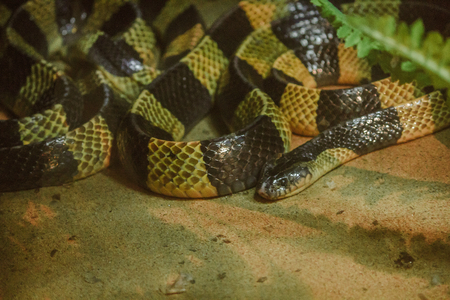Introduction to Enclosure Needs for Reptiles, Amphibians, and Small Mammals
Choosing the right enclosure is one of the most important decisions you can make as a pet owner. Whether you’re caring for reptiles, amphibians, or small mammals, a proper enclosure keeps your pet safe, healthy, and happy. Each animal group has different needs based on their natural habitats, behaviors, and physical requirements. Understanding these differences helps you create an environment where your pet can thrive.
Why Proper Enclosures Matter
An enclosure does more than just keep your pet from escaping. It provides security, regulates temperature and humidity, and offers enough space for exercise and enrichment. The right enclosure supports natural behaviors like climbing, burrowing, or swimming, which are essential for mental and physical well-being.
Different Needs by Animal Type
| Animal Group | Main Needs | Common Enclosure Features |
|---|---|---|
| Reptiles | Temperature control, UVB lighting, humidity regulation, hiding spots | Glass tanks with secure lids, heat lamps, basking platforms |
| Amphibians | High humidity, access to water, gentle temperature changes | Aquariums or terrariums with water areas, misting systems |
| Small Mammals | Ventilation, solid flooring (for feet), space to burrow or nest | Wire cages with plastic bases, tunnels, nesting boxes |
The Importance of Customization
No single enclosure fits every animal. For example, bearded dragons need dry heat and plenty of floor space to roam, while frogs require moist environments and easy access to clean water. Hamsters enjoy deep bedding to dig in but also need secure lids since they are escape artists. Matching the enclosure setup to your specific pet is key to meeting their unique health and behavioral needs.
2. Glass Terrariums: Visibility and Versatility
Glass terrariums are one of the most popular enclosure choices for reptiles, amphibians, and small mammals in the United States. Many pet owners love glass tanks because they allow you to clearly see your pets and create beautiful, natural-looking habitats. However, while they have some great benefits, glass terrariums also come with a few drawbacks that are important to consider before making your decision.
Advantages of Glass Terrariums
- Excellent Visibility: The biggest advantage is how easy it is to see your pet from all sides. This is great for observation and display, especially if you want to watch your reptile or amphibian’s behavior up close.
- Versatility: Glass tanks come in many sizes and shapes, making them suitable for a wide range of animals and setups. You can easily decorate them with backgrounds, plants, and other features.
- Climate Control: It’s easier to maintain humidity and temperature levels in a glass terrarium. This is especially helpful for tropical species that need consistent warmth and moisture.
- Easy to Clean: Glass surfaces don’t scratch easily and are simple to wipe down or disinfect when needed.
Disadvantages of Glass Terrariums
- Heavy Weight: Glass tanks can be very heavy, especially larger models. This makes them harder to move or rearrange in your home.
- Poor Ventilation: Most standard glass enclosures don’t offer much airflow. Without proper ventilation, humidity can become too high, leading to mold growth or respiratory issues for your pets.
- Fragility: Glass can crack or break if dropped or bumped hard enough, so you’ll need to handle these enclosures with care.
- Limited Escape Prevention: Some small mammals or agile reptiles might find ways to escape if the lid doesn’t fit securely.
Quick Comparison Table
| Pros | Cons |
|---|---|
| Great visibility Good climate control Versatile designs Easy cleaning |
Heavy and hard to move Poor ventilation Fragile Escape risk if not secured |
Is a Glass Terrarium Right for Your Pet?
If you’re looking for an attractive enclosure that lets you observe your pet easily and maintain specific environmental conditions, a glass terrarium could be a good fit—just make sure you address any ventilation needs and secure the lid properly. Consider the specific requirements of your reptile, amphibian, or small mammal before choosing this option.

3. Screen and Mesh Cages: Maximizing Airflow
Screen and mesh cages are popular enclosure choices, especially for reptiles and amphibians that thrive in well-ventilated environments. These enclosures use fine metal or plastic mesh for the walls and sometimes the top, allowing for excellent airflow while keeping your pet secure.
Why Choose Screen and Mesh Cages?
If you have species like chameleons, green anoles, or certain tree frogs, screen and mesh enclosures are a go-to option. These animals often need high humidity combined with constant air circulation to stay healthy. Mesh cages help prevent stagnant air, reduce the risk of respiratory infections, and keep things fresh.
Benefits of Screen and Mesh Enclosures
| Benefit | Description |
|---|---|
| Excellent Ventilation | Keeps air moving, preventing mold, bacteria buildup, and overheating. |
| Lightweight & Portable | Easier to move or clean compared to heavy glass tanks. |
| Naturalistic Environment | Mimics breezy outdoor habitats, which can lower stress for many arboreal species. |
Drawbacks to Consider
| Downside | Description |
|---|---|
| Poor Humidity Retention | Moisture escapes easily; can be a challenge for species needing high humidity. |
| Limited Temperature Control | Difficult to maintain stable temperatures, especially in cooler homes. |
| Lesser Security for Small Pets | Tiny pets or insects may escape through larger mesh openings. |
Tips for Using Screen and Mesh Cages Effectively:
- Misting Frequently: Use a spray bottle or automatic mister to maintain humidity levels.
- Add Live Plants: Live plants help hold moisture in and improve enclosure aesthetics.
- Supplement with Humidifiers: Place a small humidifier near the cage if your pet needs extra humidity.
- Check Mesh Size: Make sure the mesh is fine enough to prevent escapes for smaller animals.
- Monitor Temperature: Use reliable thermometers to ensure your pet stays within its preferred temperature range.
4. Plastic and PVC Enclosures: Durability and Customization
Plastic and PVC enclosures are increasingly popular among reptile, amphibian, and small mammal owners in the United States. These habitats offer a modern alternative to traditional glass or wood tanks, and they’re especially favored for their lightweight design and versatility.
Why Choose Plastic or PVC?
One of the biggest advantages is how easy these enclosures are to move around. If you frequently rearrange your pet room or need to transport your animal, plastic and PVC options make life much easier. They’re also super simple to clean—most messes wipe right off, which helps keep your pet healthy and reduces odors.
Customization Options
PVC and plastic enclosures come in lots of shapes, sizes, and styles. Many brands let you choose different features like built-in lighting, heating elements, stackable designs, or sliding doors. Some hobbyists even build custom habitats from scratch using PVC sheets for a truly personalized setup.
Pros and Cons at a Glance
| Pros | Cons |
|---|---|
| Lightweight—easy to move and transport | Can be more expensive upfront than glass tanks |
| Highly customizable (sizes, doors, ventilation) | Poor ventilation if not designed properly; can trap humidity |
| Simple to clean and sanitize | Some plastics may warp with strong heat lamps if not high quality |
| Durable; resistant to breaking or cracking compared to glass | May scratch more easily than glass over time |
| Retains heat well—good for species that need warmth | Not as visually clear as glass for viewing pets |
Things to Consider Before Buying
If you’re thinking about a plastic or PVC enclosure for your reptile, amphibian, or small mammal, it’s important to check the design for proper airflow. Some cheaper models have limited ventilation, which can lead to mold or unhealthy humidity levels. Also, while initial costs might be higher than basic glass tanks, the durability and ease of maintenance often balance out the investment in the long run.
5. Wire Cages and Modular Habitats: Space and Enrichment
Overview of Wire Cages and Modular Habitats
Wire cages and modular habitats are popular choices for housing small mammals like hamsters, gerbils, mice, rats, guinea pigs, and even some reptiles or amphibians that require excellent ventilation. These enclosures are designed to maximize space, provide enrichment opportunities, and make it easy for pet owners to access their pets for cleaning or playtime.
Benefits of Wire Cages and Modular Setups
| Feature | Pros | Cons |
|---|---|---|
| Space | Often offer multi-level layouts with ramps, platforms, and tunnels for climbing and exploring. | Can take up more room in your home compared to basic tanks or bins. |
| Enrichment | Cages can easily be customized with toys, wheels, hammocks, tubes, and chew items to keep pets active and entertained. | If not set up thoughtfully, pets may get bored or stressed due to lack of stimulation. |
| Ventilation | Open wire design allows for excellent airflow, reducing odors and keeping bedding drier. | Drafts can be a problem in colder rooms; sensitive species may need extra protection. |
| Ease of Access | Large doors or removable tops make daily cleaning and pet interaction simple. | Pets can sometimes escape if doors aren’t securely latched or if bar spacing is too wide. |
| Visibility | You can easily watch your pet’s natural behavior from all angles. | Noisy environments may stress shy animals due to the open design. |
Key Safety Considerations
- Bar Spacing: Make sure the bars are close enough together to prevent escapes—especially for smaller pets like mice or young hamsters. For example, 1/4 inch bar spacing is best for mice; 1/2 inch may work for adult hamsters or rats.
- Material Quality: Look for powder-coated metal rather than bare wire to avoid rusting or sharp edges that could injure your pet.
- Bedding Scatter: Some pets love to dig and burrow, so deeper trays help keep bedding inside instead of all over your floor.
- Toys and Accessories: Modular cages allow you to attach tunnels, tubes, wheels, and climbing branches—perfect for enrichment but always double-check connections so nothing comes loose.
Popular Modular Cage Brands in the US
- CrittterTrail (Kaytee)
- Habitrail (for hamsters and mice)
- MIDWEST Critter Nation (rats and ferrets)
- C&C Cages (guinea pigs)
Summary Table: Are Wire Cages & Modular Habitats Right for Your Pet?
| Best For | Avoid If… |
|---|---|
| Active climbers Pets that need lots of enrichment Owners who enjoy customizing habitats |
Your pet is very small (risk of escape) You live in a drafty area You want a low-maintenance setup with minimal mess outside the cage |
6. Choosing the Right Enclosure: Factors to Consider
Picking the perfect enclosure for your reptile, amphibian, or small mammal can feel overwhelming, especially with all the choices out there in the U.S. market. To make things easier, lets break down what you really need to think about before making a purchase.
Species-Specific Needs
Every animal is different! Some reptiles love to climb, while others dig or swim. Amphibians often need high humidity, and small mammals may require cozy hiding spots. Always research your pet’s natural habitat and behaviors to match them with the right enclosure style.
Common Needs by Pet Type
| Pet Type | Key Enclosure Requirements |
|---|---|
| Reptiles | Ventilation, basking areas, UV lighting, secure lids |
| Amphibians | High humidity, water features, escape-proof design |
| Small Mammals | Safe bar spacing, solid flooring, nesting spaces |
Space Available at Home
Your living situation matters! If you live in an apartment in New York or have a big backyard in Texas, the amount of room you can give your pet will influence your choice. Make sure the enclosure fits comfortably in your home without cramping your lifestyle or your pet’s well-being.
Budget Considerations
Enclosures come in all price ranges. Glass tanks and custom vivariums can be pricey, while plastic tubs and wire cages are usually more affordable. Don’t forget to factor in the cost of accessories like heating lamps, bedding, and cleaning supplies!
Cost Comparison Table
| Enclosure Type | Average Cost (USD) | Best For |
|---|---|---|
| Glass Terrarium | $50–$300+ | Reptiles & Amphibians |
| Acrylic/Plastic Cage | $30–$100+ | Small Mammals & Some Reptiles |
| Wire Cage | $20–$80+ | Small Mammals (e.g., hamsters, mice) |
| Custom Vivarium | $200–$1000+ | Specialty Pets & Display Tanks |
Local Climate and Temperature Control
If you’re in a hot Southern state or somewhere chilly up North, climate plays a big role. Some enclosures hold heat better than others or allow for better humidity control. Consider if youll need extra equipment like heaters or humidifiers based on your area.
Maintenance and Cleaning Needs
No one wants an enclosure that’s a pain to clean! Think about how easy it is to access every corner for spot cleaning and full deep-cleans. Removable trays, wide doors, and simple designs can make life much easier for busy American pet owners.
By weighing these factors—your pet’s specific needs, available space, budget, local climate, and how much time you want to spend on maintenance—you’ll be better equipped to choose an enclosure that keeps both you and your animal happy.


